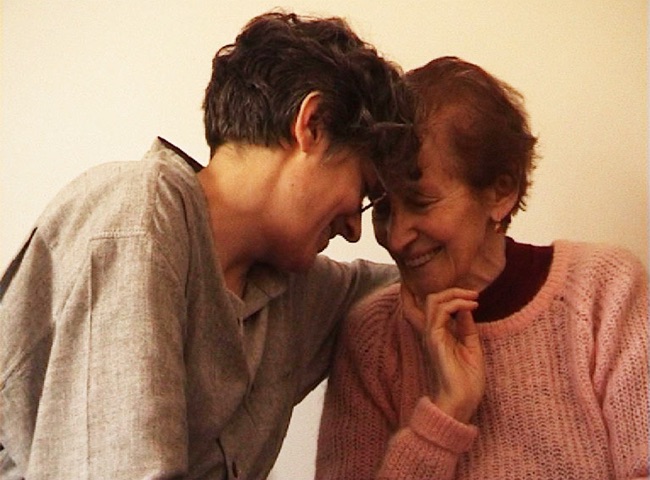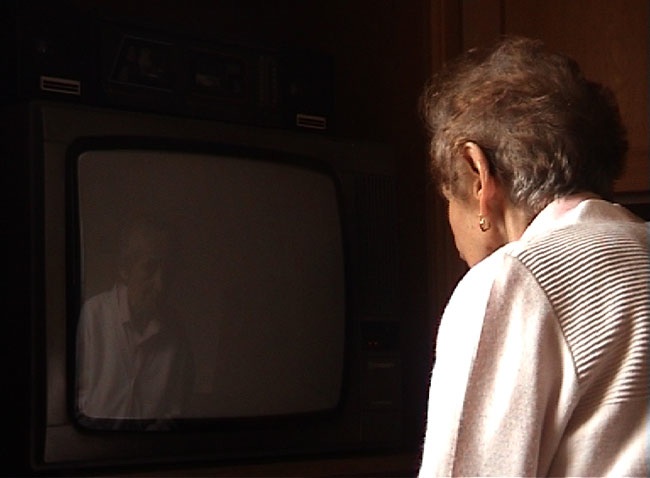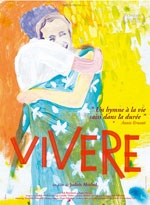Vivere
-
Réalisé par Judith Abitbol • Écrit par Judith Abitbol
-
France • 2016 • 110 minutes • Couleur
- Réalisation :
Judith Abitbol - Écriture :
Judith Abitbol - Image :
Judith Abitbol - Son :
Judith Abitbol - Montage :
Cyrielle Thélot, Judith Abitbol
- Production (structure) :
Godot production - Coproduction :
Triune Productions Ltd. - Ayant droit :
Godot production
- N° ISAN :
ISAN 0000-0005-8BC4-0000-Q-0000-0000-X
Résumé
Pendant huit ans, j’ai filmé dans son village en Italie, Ede Bartolozzi qui souffrait de la maladie d'Alzheimer. Pendant huit années, je filme ce qui est en train de disparaître. Je le sais. Elle aussi savait. Pendant des années j’ai filmé Ede, attirée, aimantée par cette vie minuscule. Plus je m‘en approchais plus elle grandissait.
Ede et Paola, sa fille, étaient liées par un amour extraordinaire. Ce film montre cet amour-là, dans ce village, avec la famille, les amis, les voisins. Les étreintes des corps, les visages et les mains. Il témoigne de ce qui restera : l'immense joie de vivre et d'avoir aimé. Depuis l’enfance je filme la vie. Je la retiens.
Filmer est très proche pour moi de ce que dit Annie Ernaux de l’écriture, "…Écrire c’est être attentif d’une autre façon aux autres, aux lieux, au temps et à soi-même". C’est ce que je nomme asile, comme abri, refuge, et les fruits de cet asile sont les rushes de ce que je filme.
Regarder le monde avec ma caméra, le détailler attentivement, patiemment, l’écouter, est une manière de continuer à apprendre, à inventer, à aimer ; une obsession à garder la mémoire de ce qui pourrait manquer plus tard.
In the Tramazzo valley, in Emilia-Romagna, Paola returns to her childhood village to visit her mother, Ede. The kindliness that exudes from her conversation with the filmmaker during their car journey seems contagious. It burgeons even more when we meet the invariably joyful “Mamona”, as she tends her garden or reminisces on her youthful years with her friend next door. For eight years, Judith Abitbol films the visits of Paola, who – as she is often abroad – notices the changes in the local landscape. Be it the cep mushroom-picking or the packing away of blankets before summer’s arrival, the film captures the joie de vivre that pervades these reunions, the hummed songs, the dancing in the middle of the street. When Ede’s first symptoms of Alzheimer’s appear, this long-running film project integrates them seamlessly, with the same caring concern as her entourage. The words of one song come back to Ede: “I was a peasant girl…” As she loses her memory, she seems to invent another one for herself, and the film discreetly restores what is still possible and surprising in this impaired existence. The vibrant intensity of the daughter-mother ties reaches its epitome in the sequence where Paola holds a skein of wool that Ede is winding into a ball – which also happens to be the movement of a film reel… (Charlotte Garson)
Collection
Sélections et distinctions
- 2016 • Images en bibliothèques • Paris (France) • Film soutenu par la Commission nationale de sélection des médiathèques
- 2016 • Cinéma du réel • Paris (France) • Mention spéciale du Prix des Bibliothèques





